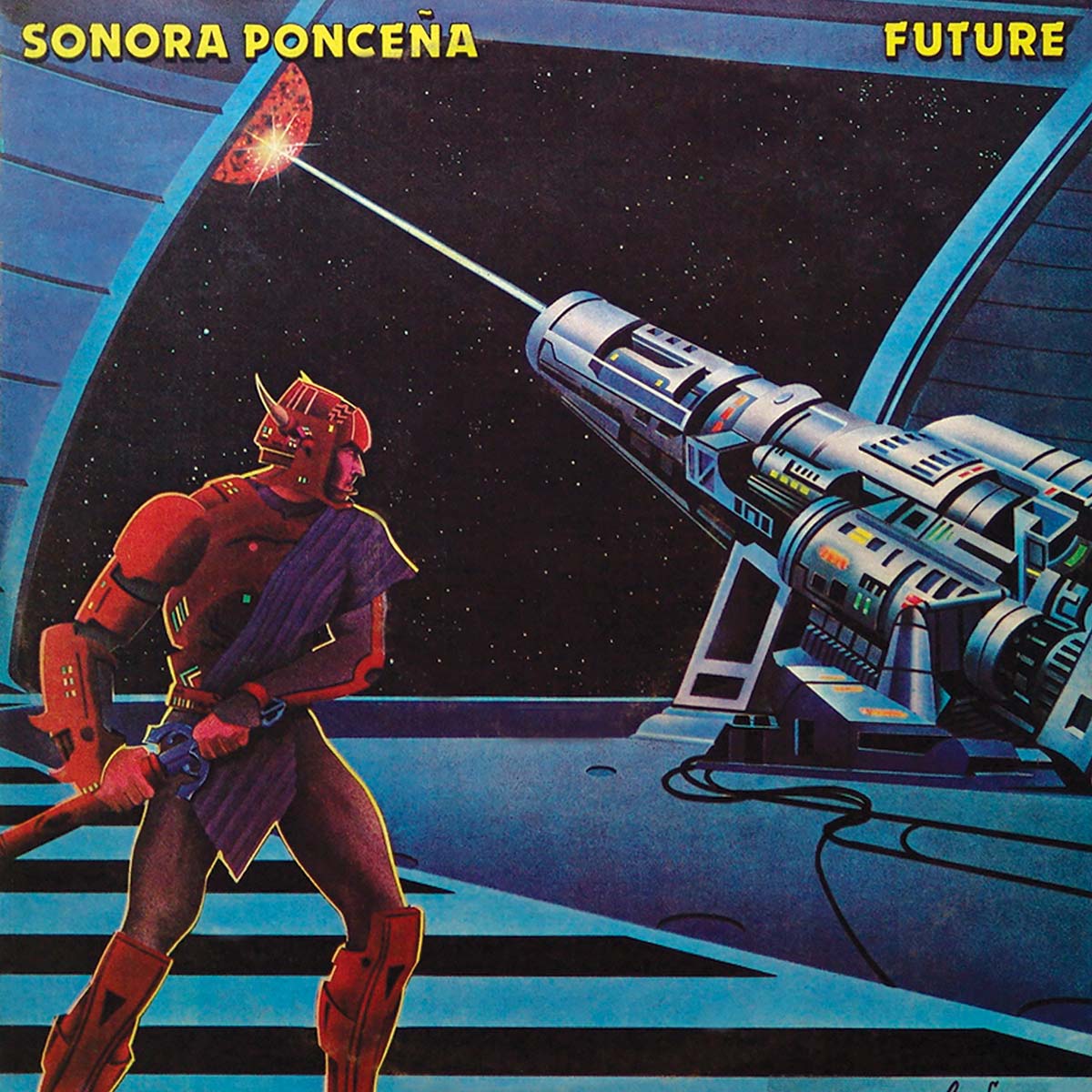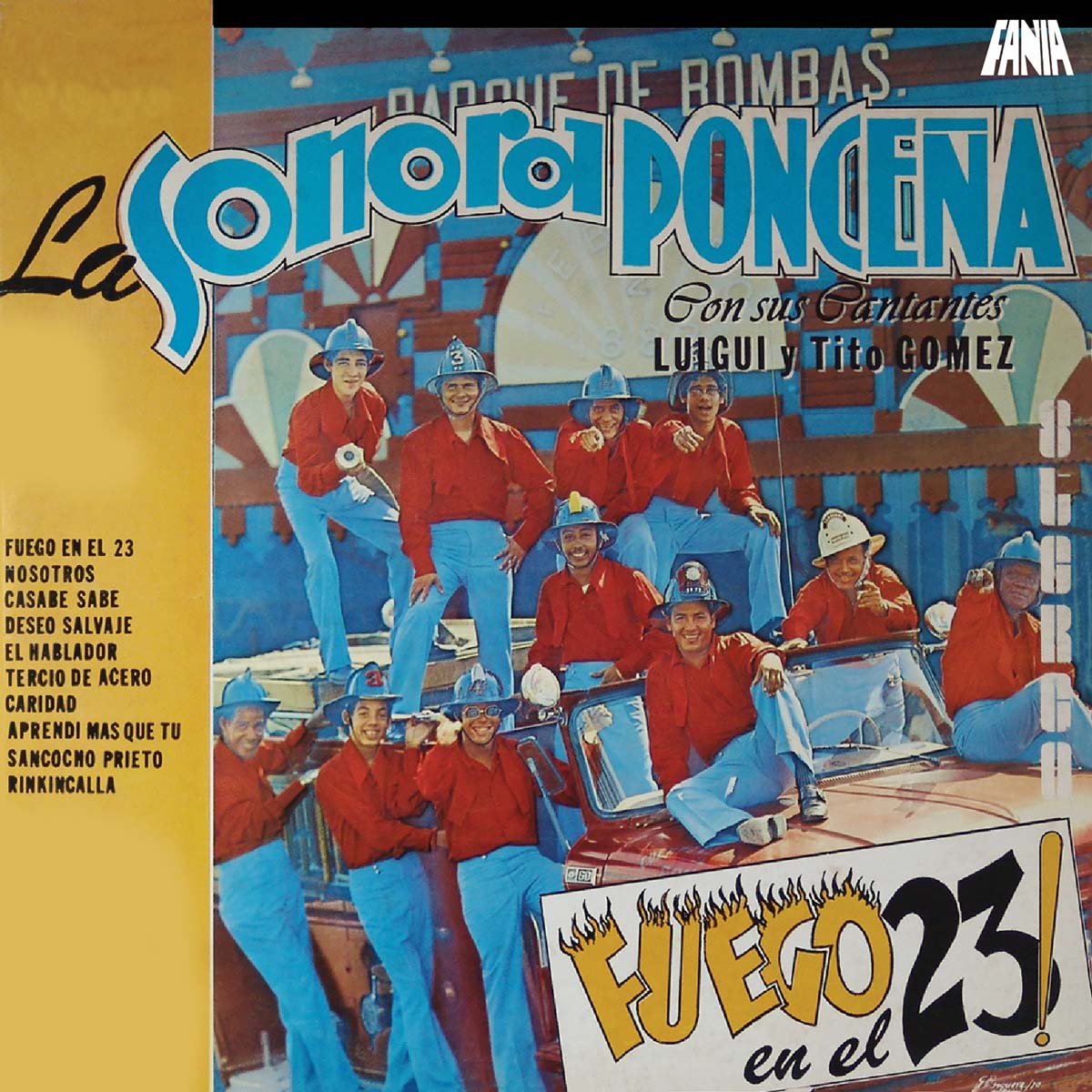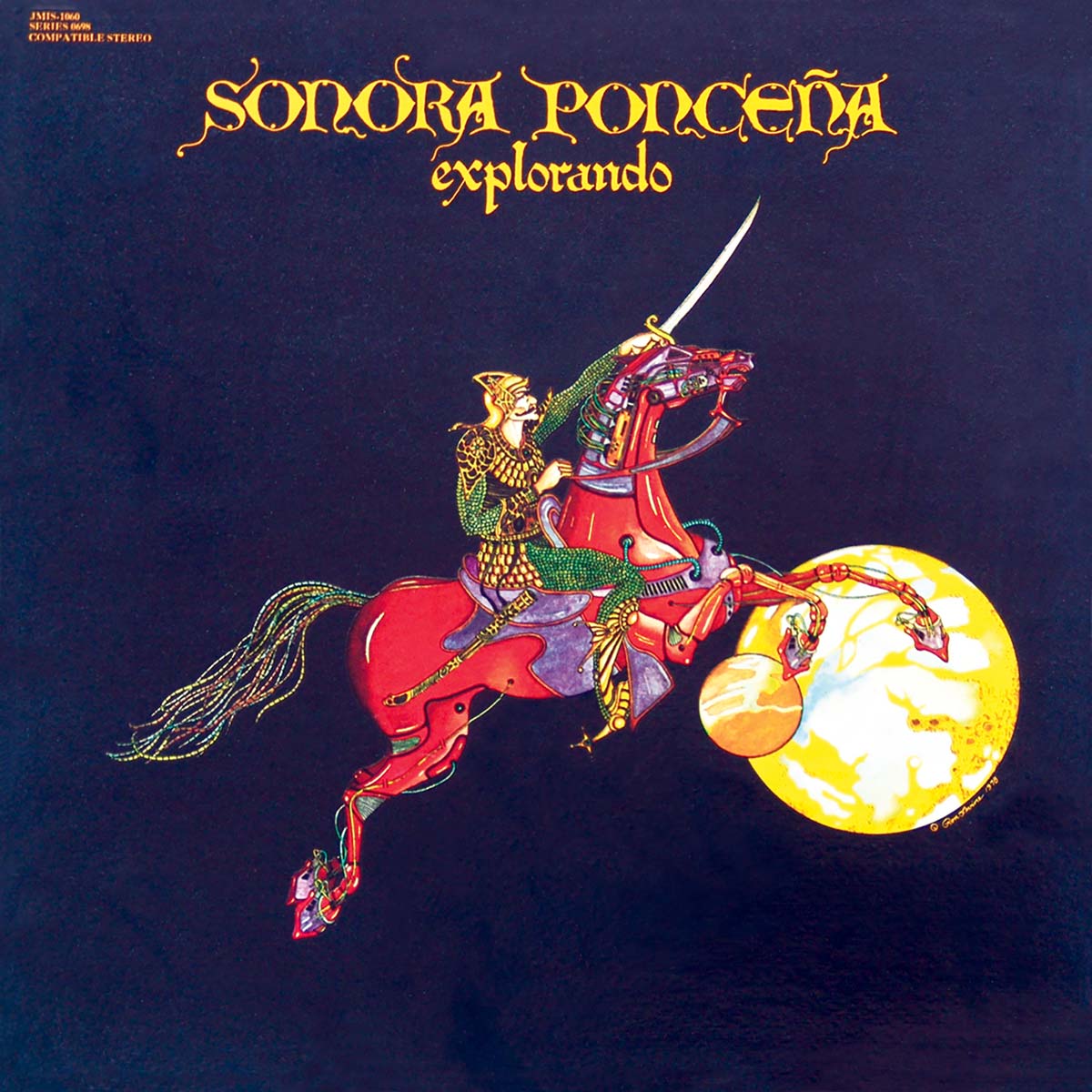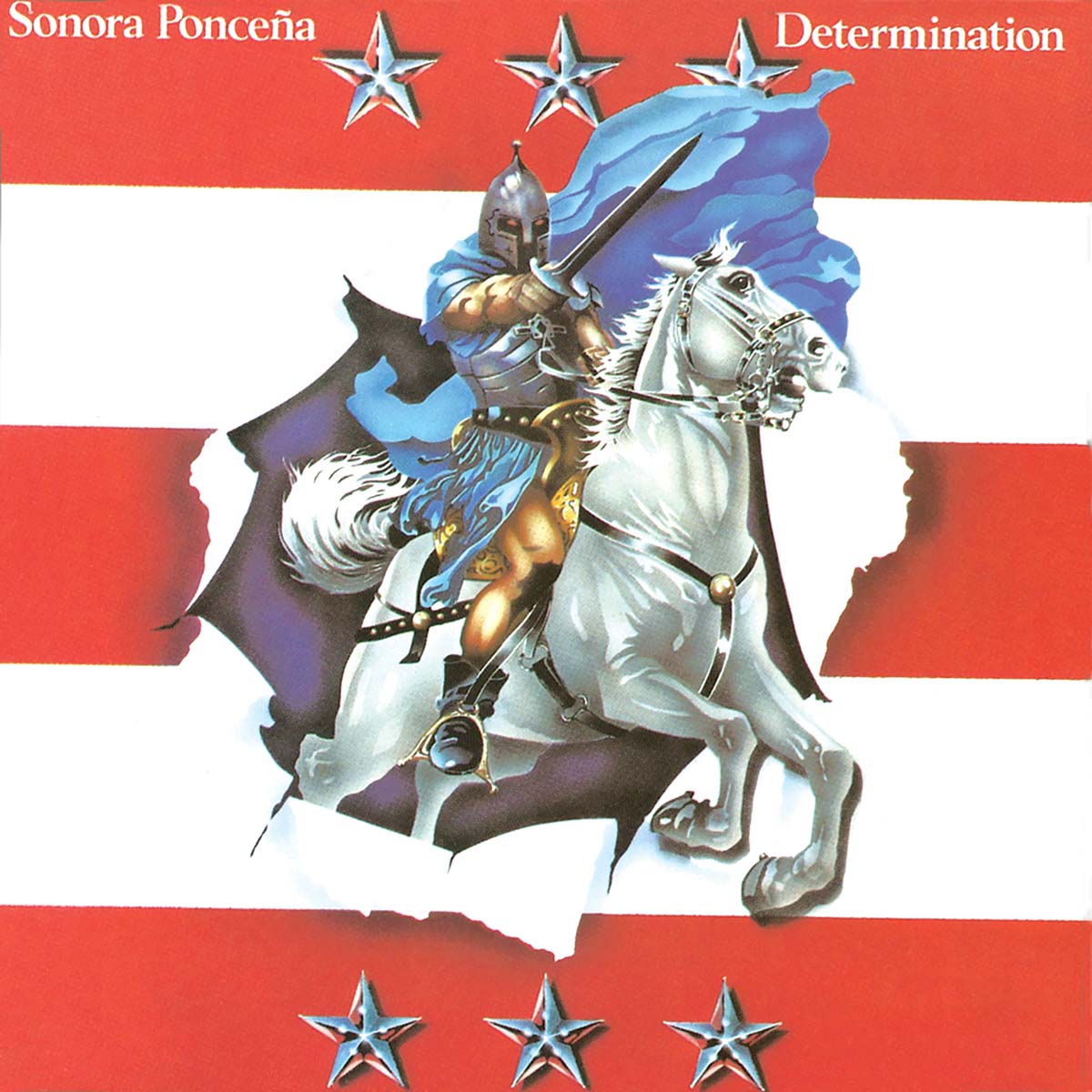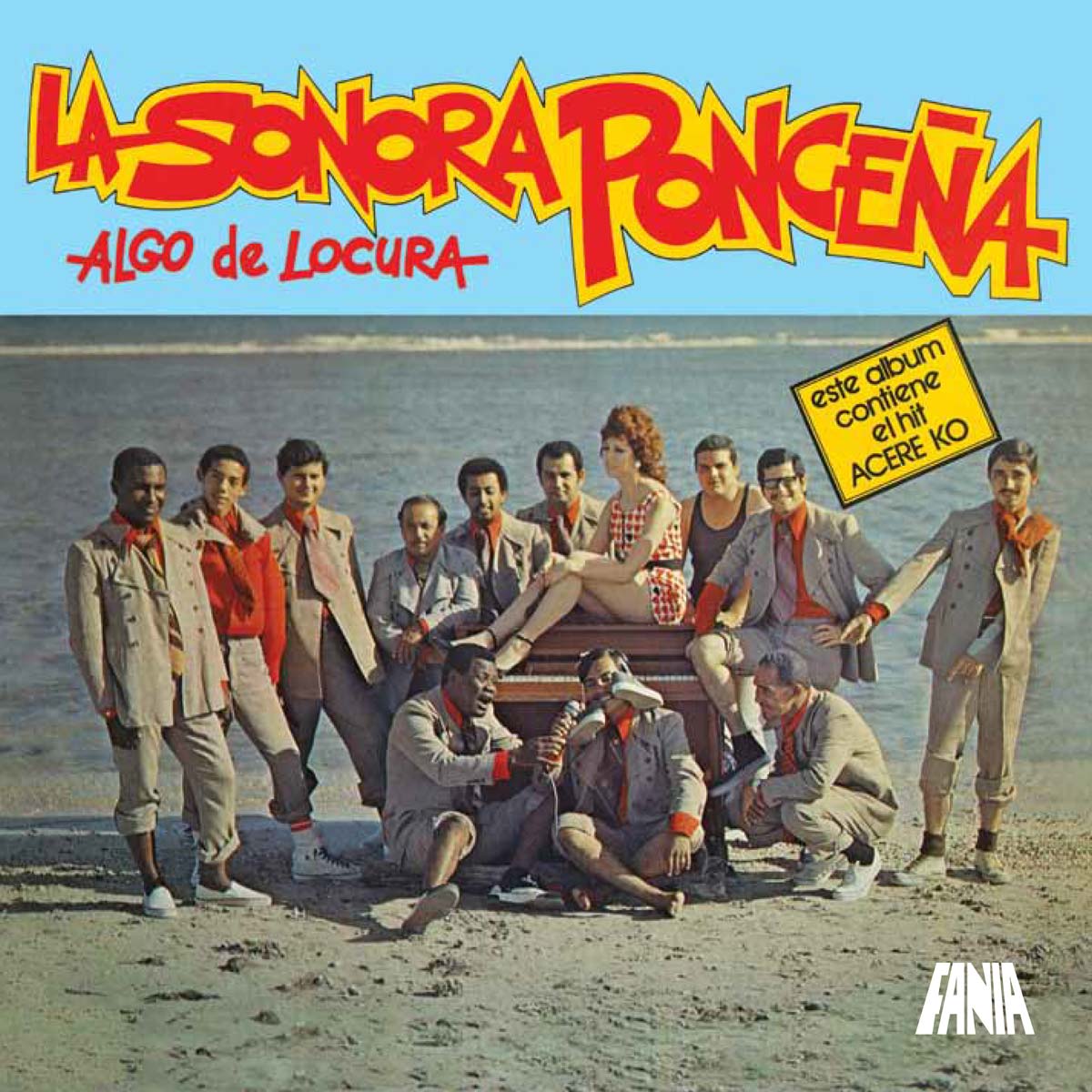
If you are already familiar with the magic of La Sonora Ponceña, then you know what this compilation has in store for you: over the span of 27 tracks, we have distilled the very essence of one of the jazziest, funkiest and most elegant orchestras ever to grace the landscape of Afro-Caribbean music. If, on the other hand, you are mostly unfamiliar with La Ponceña’s brand of Puerto Rican salsa, and decided to purchase this set to see what the band is all about, then you are in for an unforgettable treat – a life changing experience. Other salsa stars managed to capture the imagination of the mainstream: Tito Puente, Celia Cruz, Héctor Lavoe and Rubén Blades are the first that come to mind.
By contrast, La Ponceña has remained a bit of a hidden secret among Latin music aficionados. Not the band itself, because La Ponceña has been enjoying massive dance hits since 1968, but rather the fact that this unpretentious orchestra is responsible for a series of timeless albums that go beyond the conventions of tropical music. La Ponceña’s discography is deep and transcendental. Sociopolitically alert and sonically experimental. Eager to absorb other influences and stubbornly sophisticated. No matter how much acclaim it continues to receive by salsa dancers and the specialized press, La Ponceña is still, at its core, an underrated band. The beginning was certainly unassuming. In 1944, Enrique ‘Quique’ Lucca Caraballo formed a little band in the city of Ponce, in the Southern coast of Puerto Rico. Its name was Orquesta Internacional, and it performed in local functions and parties without achieving the kind of artistic pedigree that Don Quique was hoping for. Ten years later, it was renamed La Sonora Ponceña, its sound enhanced, devoted to the zesty dance numbers of Cuban artists like Arsenio Rodríguez and La Sonora Matancera.
The band would probably have remained anonymous, if it wasn’t for the leader’s son, Enrique Arsenio. Born in 1946 and nicknamed ‘Papo,’ he was a child prodigy who grew up listening to his father’s orchestra and developed an uncanny ability to perform the piano. Like many salsa musicians, Papo was equally enamored with the Afro-Cuban music of the Caribbean and the jazz soundscapes of performers like Oscar Peterson and Bill Evans. This sweet dichotomy would define La Ponceña’s excellence for decades to come. By the time the orchestra released its debut album on the label Inca Records in 1968, Papo was La Ponceña’s musical director and arranger. Inca would become part of the Fania conglomerate, and the band enjoyed international distribution during the New York salsa explosion of the ’70s. The timing couldn’t have been more auspicious, and Papo eventually replaced Larry Harlow as the official piano player with mega-orchestra Fania All Stars. His piano solos – velvety, complex, endlessly fascinating – would remain at the core of La Ponceña’s identity. But the Luccas were also incredibly astute when it came to enlisting lead vocalists. Tito Gómez, Luigi Texidor, Miguelito Ortiz and Yolanda Rivera are a few of the genre-defining soneros than can be heard on this compilation. La Ponceña’s trajectory can be divided into three distinct stages. The first one spans the years from 1968 to 1975. The band’s early albums favor a tough, rugged sound. Compared to the other seminal groups of the time, Lucca’s arrangements lack the exuberance of Willie Colón’s trombone lineup, or the lush dynamics of Eddie Palmieri’s La Perfecta. They are almost austere, implacable in their rhythmic intensity, using the sound of trumpets to evoke the bravado of an old fashioned Hollywood epic.
The early hits (“Hachero Pa’Un Palo,” “Fuego En El 23”) are salsified renditions of Arsenio Rodríguez standards. Recorded in 1971, “Acere Ko” is a crisp, airy version of a joyful rumbón written by Patato and Totico. And the opening track off the now classic Desde Puerto Rico A Nueva York LP, “Prende El Fogón” solidifies the quintessential Sonora Ponceña sound: the arrangement glides like a beautiful couple skating on ice. An inspired Tito Gómez introduces Papo’s latest concoction, piano al horno (“baked piano”) and the contrast between the bandleader’s refined solo and the ensemble’s ferocious rhythm section is memorable. The explosion that follows, all staccato cowbell punch and spiraling trumpet riffs, has been sending salsa dancers into a frenzy for decades. The best was still to come. Between 1976 and 1979, La Ponceña released five albums of a new tropical style that can be best summed up as “progressive salsa.” Lucca was clearly aware of the progressive rock albums that were coming out of England at the time, and there are touches of psychedelia, space-rock, electronic keyboards and sound effects on the new works. The musty Cuban bolero “Soy Tan Feliz” becomes a jazz-rock fusion gem thanks to Papo’s electronic piano, and La Ponceña discovers Brazilian music by turning Edu Lobo’s bossa nova tune “Boranda” into a seven minute-long epic, and splitting up “Bomba Carambomba” right in the middle with a samba beat (“ahora es bossa nova para variar un poquito,” enthuses Texidor.)
Two years later, Tito Gómez’s gritty delivery on “Soy Moreno” is enriched with a solo that sounds straight out of Chick Corea’s Return To Forever records. It was Conquista Musical in 1976 that ushered the new era with a more polished sheen, courtesy of co-producer Louie Ramírez. The piano solos are more extensive, fully developed, and the opening “Ñáñara Caí” blends a placid melody with a hilarious narrative describing a world that’s gone upside down – we even hear about Fania co-founder Johnny Pacheco being run over by a cow. Conquista left space for a mega-hit, the hummable “El Pío Pío,” an idyllic view of life in the Puerto Rican countryside and Papo’s stylized take on what a pop single should sound like. A strategy that he would repeat with equal success on the Yolanda Rivera-penned “Canto Al Amor.” This second stage came to an end in 1979 with La Ceiba, an album recorded in collaboration with the Queen of salsa herself, Celia Cruz. Interestingly enough, the LP failed the ignite the same kind of violent combustion that La Ponceña had already achieved with its own diva, Yolanda Rivera. But La Ceiba gave further proof of the orchestra’s privileged position within salsa royalty. The third and final stage of La Ponceña’s aesthetic evolution begins in 1980 with the album New Heights. Mirroring the conceptual tendency of many heavy metal and hard rock bands of the time, the cover art on all future Ponceña albums depicts imagery inspired from the world of fantasy literature: muscular warriors and distant planets, flying horses and science fiction laser cannons. New Heights begins with yet another hit, “Ahora Sí,” a modernized rendition of the old Machito guaracha “Yo Soy La Rumba.”
The sound is a bit more relaxed now, a perfect combination between creamy smoothness and the old percussive force. Inside, a new innovation: Papo grabs Dizzy Gillespie’s “Night In Tunisia” in his expert boricua hands and turns it into the Latin jazz equivalent of a chocolate bonbon – a precious musical miniature with a remarkable attention to detail and an exquisite piano workout. In Puerto Rico, people began paying attention. Many fans discovered the beauty of Latin jazz thanks to La Ponceña. Other instrumentals would follow: “Nica’s Dream,” “Woody’s Blue,” “Satin ‘N’ Lace.” At this point, Papo must have realized that he was responsible for one of Latin music’s grandest bands. His confidence now at a peak level, he experimented with boldness and grace. Throughout the ’80s and ’90s, each successive Ponceña album yielded fresh new discoveries: adaptations of contemporary Cuban songs by illustrious but underrated composers such as Adalberto Alvarez and Pablo Milanés; salsified translations of Anglo hits; extended tributes to legends of the Afro-Caribbean past. 1980’s Unchained Force distilled the band’s devotion to its native Puerto Rico on the rapturous “Borinquen” – a melody that borrows the stately majesty of the island’s folklore, complemented by Yolanda’s chocolaty delivery, choked up with emotion. Our compilation ends in 1998, with “Fea,” a huge hit from the On Target album. Since then, La Ponceña has survived the advent of reggaetón, as well as the bastardization of tropical music by pasteurized Latin pop. Lucca took the band’s direction into his hands by opening his own label, Pianissimo Records, and releasing new studio albums and concert recordings of excellent quality.
When not touring the rest of the world, the band performs regularly all over Puerto Rico. The band’s current gigs can be a bit frustrating to longtime fans, since it is just impossible to fit all of the group’s major hits into one single evening of live music. But the fire is there, and Papo’s piano sounds today as pristine and eloquent as ever. If anything, La Ponceña’s body of work demonstrates that salsa is much more than just great dance music. A kaleidoscope of extreme emotions, its beauty touches the soul in the most unexpected and profound ways ERNESTO LECHNER– Many thanks to Papo Lucca, Michael Rucker, Rudy Mangual, Sandra Lechner and Vivian Mancilla for their assistance in compiling this collection.



